Over the last week or two many reports of disease in wild adult salmon populations have been reported. These reports have been widespread ranging from Scotland to Scandinavian. The common factor is death through fungal infection (Saprolegnia). Nothing new there you may say but the difference this year is the focus of the fungal infection along the underside of the fish. There is evidence from northern Scottish rivers that the fungal infection is preceded by what looks like a rash on the underside of the fish with associated haemorrhaging. In the rivers with the worst incidences there have been large losses from fungal infection, whilst in others there is no fungal infection, yet.
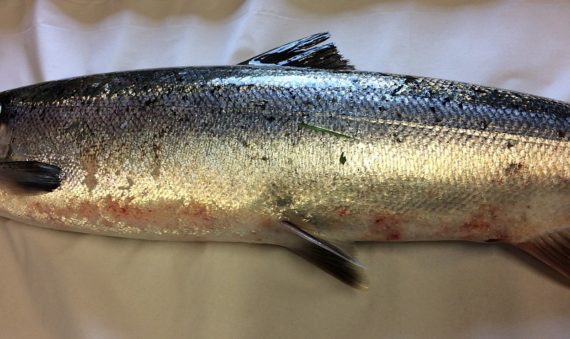
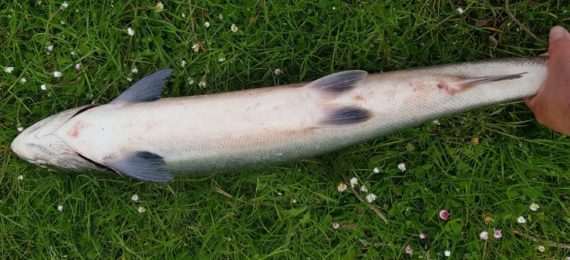
Fresh run salmon appear to be entering rivers carrying rash like marks on their underside, leaving them susceptible to fungal infection. If fish with this skin damage become infected with fungus death occurs quickly. It also looks as if only the recent arrivals have been affected with the no sign of it in the older fish.
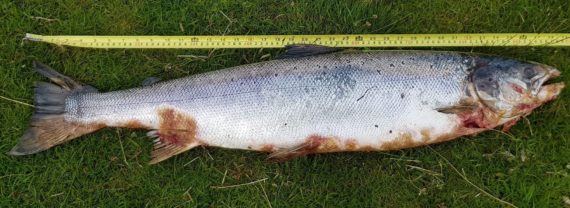
To lose some of the spring stock to fungus is not unusual in the Spey, especially the May fish, which always seem the most susceptible. However, affected fish normally have patches of fungus on the head, gills, back and fins, as in the example below.
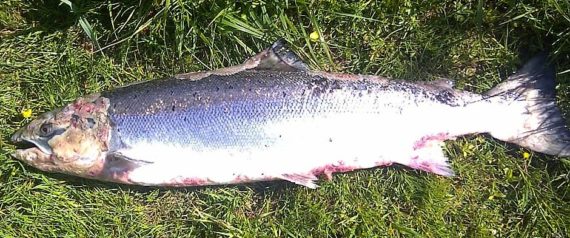
Fishery managers in the northern rivers, which seem to be the worst affected at present, have been admirably open about the situation and proactive with sampling and analysis. Indeed I have just heard that the Marine Lab Fish Health Inspectors have returned negative results for the viral and histology samples from Helmsdale fish. The Helmsdale managers are also organising for infected fish to be sampled to assess Thiamine levels. There are various reports of Thiamine deficiency affecting ecosystems, in the Baltic for example. A link between the disease outbreak in 2019 with Thiamine deficiency has yet to be established.
So far there have been no affected fish reported from the Spey but that may change. Those who have experienced this disease in the last few weeks are understandably worried. We hope that this will turn out to be a temporary problem which will clear up as the summer progresses. In the past, a summer spate, as we have seen on the Spey in the last two weeks, usually clears up fungal problems very quickly, with no recurrence again until the autumn. In the meantime we are asking ghillies and anglers to photograph fish with unusual marks on the belly. Fish health inspectors will be called if required.
If anyone wishes further information, or to discuss, please do not hesitate to call the Spey Fishery Board office.

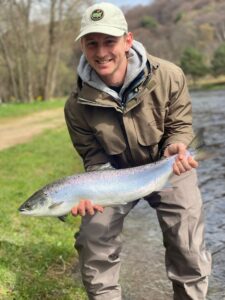
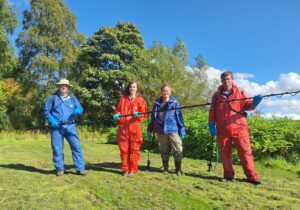
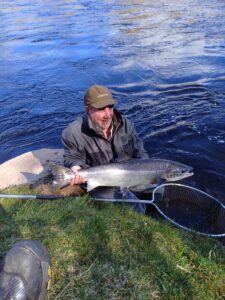


8 thoughts on “Salmon skin damage and disease”
Looks like a blood related disease. Any links with farmed salmon diseases or indeed sea lice diseases ?
It maybe thiamine deficiency, has any fish been tested for this, the fungal growth may be a secondary in fection?
Norman, that is one theory. I know that fish from one of the rivers up north have sent fish for testing for thiamine. but not heard any results yet. The fungal growth is always secondary to the primary cause, which is often skin damage. Still no reports from the Spey, fingers crossed! Thanks for the comment
Hi Brian was there any conclusion to this disease? Our sea trout and salmon are very badly effected this year (Nov 2020) with fungus. Many never got to spawn as they perished and there is fish dying.
Disease like this could be from fish hanging around farm cages bringing it into rivers one could imagine as the farms are riddled with diseases and ever increasing mortalities!
Hi Colin, short answer no. I think autumn fungus is a separate issue, probably unrelated to the red bellies seen on the early fish, more so in 2019, although some rivers were still badly affected in 2020 (not in the Spey though). We have had very little autumn fungus on the Spey. I can see it in the spawning fish now, and after spawning, but that is entirely normal. October was wet, constant high water, which probably helped contained the fungus. It seems to be worse here in a warm. low water October. As you have observed the mortality amongst pre-spawning fish can be high, which is a shame. Where about are you?
I am not sure that aquaculture has an influence here, and there is little evidence that wild salmon hang about cages. There is more potential for interaction between sea trout and fish cages, they are often located in the areas where sea trout would feed. If sea trout were weakened by parasites, for example, then they would be more susceptible to skin problems, or fungal infection.
Sorry I don’t have any answers for you,
Brian
Hi Paul, check out salmon confidential on you tube quite shocking. We wonder were the salmon have gone.
Over 7 million diseased dead farmed salmon buried last year on South Uist, I believe. Where do their putrifying body liquids leak to? The sea? Affecting wild salmon passing nearby? Not impossible.
Apologies. It was North, not South, Uist and the correct figure is 9 million.